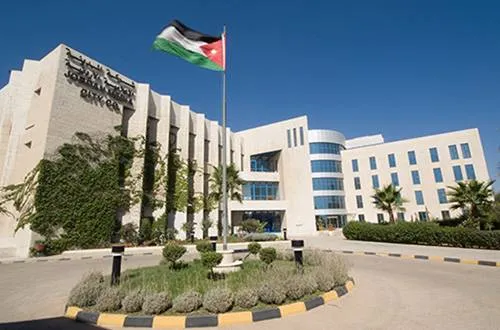Introduction to Jordan’s Media Landscape
At the beginning of the last week, a significant decision was made in Jordan, with Reem Al-Jazi being appointed as the director of media and communication at the Royal Jordanian Court. This appointment comes from the same location as Crown Prince Hussein Bin Abdullah II, aiming to achieve harmony in the media reference for news related to the Jordanian monarch, King Abdullah II, the Crown Prince’s Office, and official Royal Court data.
Background and Significance
This sudden change occurred less than a year after the former director, Nart Buran, left his position. Notably, before Al-Jazi’s appointment, a woman held the position, and Al-Jazi herself has a long journey of experiences at both local and international levels. Prior to her appointment, she worked at the European Union’s mission in Amman, where her name was mentioned in crucial meetings due to her position in media decision-making and her cooperation with public policies in the country.
Impact and Speculation
This change has triggered speculation among observers who expected a wave of changes in media leadership positions in the country, particularly in daily newspapers and official media institutions. This speculation comes in conjunction with official media discourses escalating the development of the region and threats to right-wing governments. The media decision in Jordan refers to certain decision-making levels, with security and political circles having an opinion on the form and content of changes. However, analysts see that there is public freedom that nobody benefits from.
Media Freedom in Jordan
Observers have appreciated the margins that the media in Jordan enjoy through contracts. While some see that the media did not take over the large margins available for movement, others believe that media freedom witnessed a recovery in the last three decades of the last century, compared to the start of the democratic transformation stage that the country witnessed after the April events in 1989. At that time, television forecasts were a state monopoly before satellite channels, and radio broadcasts were the only media scene, characterized by an abundance of media products and a lack of information.
Classification of Influential Media
In recent years, official authorities have taken over the classification of influential media connected to the official line, with only three newspapers being visited by announced events or closed sessions. These include the "Al-Dour" newspaper, the oldest in the kingdom, followed by "Al-Raii" and "Al-Ghad," which has the favor of permanent presence. The government has also summarized more than 15 local televisions into two screens: the official Jordanian TV and "Kingdomy TV," with conditions in public services and ideas dealt with administratively and financially by the government.
Leadership Crisis
The birth of daily newspapers in the kingdom came between private property and public contribution. The purchase of the "Public Company for Social Security" for the largest proportion of the newspapers "Al-Raii" and "Al-Dustour" was one of the first forms of owner overlap, thus selecting media leaders and the form and content of press reporting and opinion articles. Before the daily newspapers entered their current financial crisis, the government’s decisions on radical changes at the level of leaders and exemption departments, especially during the reign of the late governments of Zaid al-Rifai and Mudar Badran in the 1970s and 1980s, were notable.
Newspapers and Events
The birth of Jordanian newspapers, official television, and radio in the country was associated with great political crises. For example, "Al-Dustour" newspaper was exhibited about three months before the setback in June 1967 and continued to have an important archive inheritance and a political role in representing a broad social color in Jordan. The newspaper "Al-Rrai" was founded in the early 1970s with an idea from Prime Minister Wasfi al-Valley, who was murdered by the "Black September" organization in Cairo at the end of 1971, and was associated with presenting the newspaper with the conservative Jordanian right color.
Media Update and Challenges
The plans and programs of comprehensive modernization in Jordan have not mentioned the development of the media system "structurally," regardless of whether it is economically or administratively. Daily newspapers depend on stable sources of income from state and judicial ads. The process of developing the essence of media output remained the same, with new digital platforms occurring but working according to the same system and without directions for public opinion or influencing main problems from the inside.
The Government Plan and Digital Revolution
Observers believe that the government plan for media development focuses on the performance of national institutions in terms of digitization and technological modernization but lacks consideration for Jordanian media needs and public opinion necessary for switching to a national media. There is confusion in the media compass between traditional press institution performance and the requirements of the digital revolution in media and information, leading to unfair competition with news transmitted by social media platforms, which are accused of being full of "misleading news and rumors."
Conclusion and the Need for Update
In this context, the Jordanian journalist’s syndicate has taken accelerated and unprecedented steps, including a series of decisions to pursue those described as "adjective of a journalist" who have been included in the judiciary. Observers emphasize the need not to exclude the media from extensive update accounts and to shift to everything issued by press and media institutions in the country. They highlight the syndrome of freedom and responsibility that restores the balance of the Jordan media and benefits from the edges of press freedoms from which nobody has benefited.

